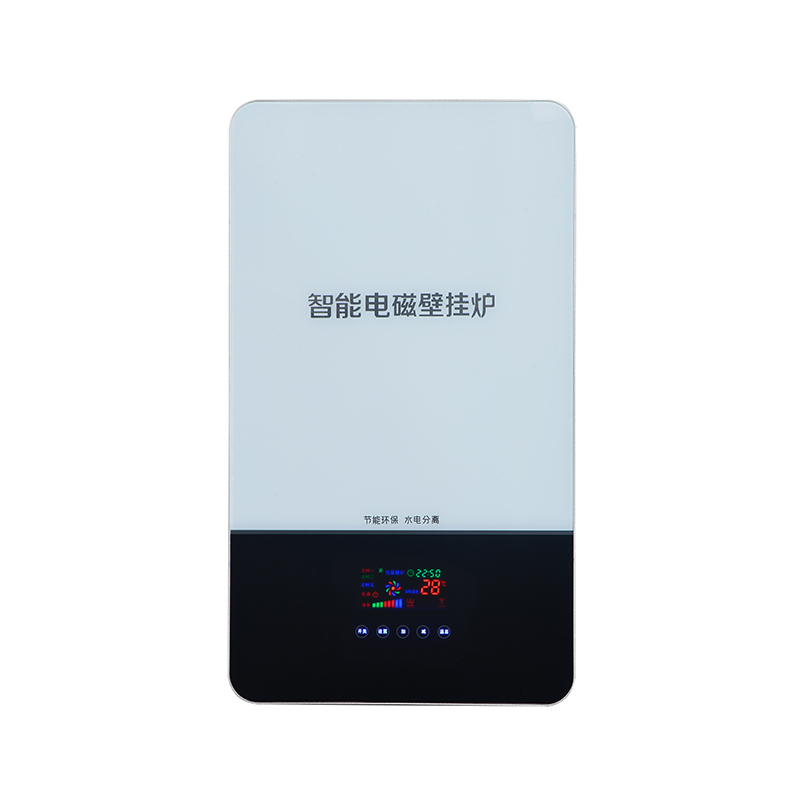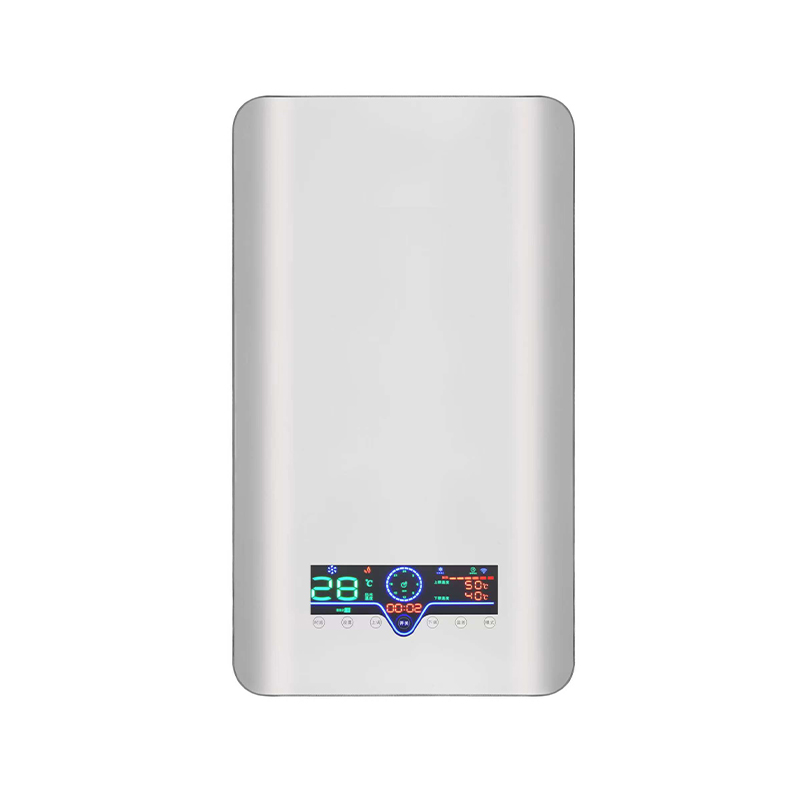Do arc-shaped electromagnetic heating furnace models have optimized magnetic field distribution for pipes, elbows, or cylindrical components?
Release Time : 2025-09-03
In modern industrial manufacturing, pipe welding preheating, equipment maintenance, and specialized machining, the demand for heating curved or cylindrical workpieces is growing. Traditional heating methods, such as flame spray guns, resistance heating strips, or infrared lamps, often struggle to achieve uniform, controllable, and efficient heat transfer. This is particularly true when processing curved components like pipes, elbows, and pressure vessels, where uneven heating, high energy consumption, and operational hazards are common. The introduction of electromagnetic heating technology offers a new solution to this problem. Arc-shaped electromagnetic heating furnaces are innovative equipment specifically designed for these unusually shaped workpieces. Their core advantage lies not only in their conformability to the shape but also in their optimized magnetic field distribution for pipes, elbows, and cylindrical components, enabling efficient energy focus and precise temperature control.
The principle of electromagnetic heating is to use an alternating magnetic field to induce eddy currents within a metal workpiece, causing it to heat itself. The efficiency of this process is closely related to the degree of coupling between the magnetic field and the workpiece. When heating a flat surface, the magnetic field distribution is relatively easy to control. However, when using traditional flat coils for curved or circular workpieces, the magnetic field will dissipate significantly due to excessive gaps or asymmetrical distribution. This can lead to a sharp drop in heating efficiency and even localized overheating while other areas continue to heat more slowly. Arc furnace electromagnetic heating equipment was developed to address this problem. By designing the coil and heating surface into an arc-shaped structure that matches the curvature of the workpiece, the magnetic field is tightly wrapped around the surface of the pipe or cylinder, minimizing the escape of magnetic field lines and improving energy efficiency.
Optimized magnetic field distribution is not only reflected in geometric fit, but also in the uniformity and controlled penetration depth of the electromagnetic field within the curved space. Advanced arc furnaces utilize a precisely calculated coil winding process to ensure consistent magnetic field strength at all points along the curved surface, avoiding "hot spots" or "cold spots" caused by uneven turns or unbalanced power supply. Some high-end models also incorporate zoned excitation technology, dividing the curved coil into multiple independent control units. This dynamically adjusts power output to each zone based on workpiece size and heating requirements, actively compensating for temperature differences caused by edge heat dissipation or curvature variations, achieving truly uniform heating across the entire surface.
This targeted magnetic field optimization gives curved induction cooktops significant advantages in practical applications. During preheating before pipe welding, it ensures that the entire metal surrounding the weld reaches the required process temperature, effectively reducing residual stress and preventing cracks. During elbow heat treatment, its uniform heat field prevents material degradation caused by localized overheating. During maintenance work on chemical or energy equipment, it allows in-situ heating of installed cylindrical components without disassembly, significantly reducing downtime.
In addition, the optimized magnetic field design enhances equipment safety and energy efficiency. Because energy is concentrated within the workpiece, the surrounding environment is less affected by the heat, reducing fire risks and operator heat exposure. Furthermore, efficient electromagnetic coupling means that lower input power is required to achieve the same heating effect, meeting modern industrial requirements for energy conservation and environmental protection.
From a system integration perspective, the modular design of the arc furnace allows it to adapt to varying pipe diameters and curvatures. Some models support multi-section splicing, providing flexibility for complex operating conditions. Combined with an intelligent temperature control system, the heating process can be precisely programmed and remotely monitored, meeting the traceability requirements of high-end manufacturing.
In summary, the key difference between an arc-shaped electromagnetic heating furnace and general-purpose heating equipment lies in its ability to optimize the magnetic field distribution for pipes, elbows, or cylindrical components. This is more than just a change in appearance; it embodies the deep integration of electromagnetics, thermodynamics, and industrial design. By "shaping" the magnetic field to conform to the workpiece, it achieves precise energy delivery and uniform temperature distribution, enabling electromagnetic heating technology to truly meet the industrial needs of complex geometries and providing an efficient, safe, and intelligent thermal solution for modern manufacturing and maintenance operations.
The principle of electromagnetic heating is to use an alternating magnetic field to induce eddy currents within a metal workpiece, causing it to heat itself. The efficiency of this process is closely related to the degree of coupling between the magnetic field and the workpiece. When heating a flat surface, the magnetic field distribution is relatively easy to control. However, when using traditional flat coils for curved or circular workpieces, the magnetic field will dissipate significantly due to excessive gaps or asymmetrical distribution. This can lead to a sharp drop in heating efficiency and even localized overheating while other areas continue to heat more slowly. Arc furnace electromagnetic heating equipment was developed to address this problem. By designing the coil and heating surface into an arc-shaped structure that matches the curvature of the workpiece, the magnetic field is tightly wrapped around the surface of the pipe or cylinder, minimizing the escape of magnetic field lines and improving energy efficiency.
Optimized magnetic field distribution is not only reflected in geometric fit, but also in the uniformity and controlled penetration depth of the electromagnetic field within the curved space. Advanced arc furnaces utilize a precisely calculated coil winding process to ensure consistent magnetic field strength at all points along the curved surface, avoiding "hot spots" or "cold spots" caused by uneven turns or unbalanced power supply. Some high-end models also incorporate zoned excitation technology, dividing the curved coil into multiple independent control units. This dynamically adjusts power output to each zone based on workpiece size and heating requirements, actively compensating for temperature differences caused by edge heat dissipation or curvature variations, achieving truly uniform heating across the entire surface.
This targeted magnetic field optimization gives curved induction cooktops significant advantages in practical applications. During preheating before pipe welding, it ensures that the entire metal surrounding the weld reaches the required process temperature, effectively reducing residual stress and preventing cracks. During elbow heat treatment, its uniform heat field prevents material degradation caused by localized overheating. During maintenance work on chemical or energy equipment, it allows in-situ heating of installed cylindrical components without disassembly, significantly reducing downtime.
In addition, the optimized magnetic field design enhances equipment safety and energy efficiency. Because energy is concentrated within the workpiece, the surrounding environment is less affected by the heat, reducing fire risks and operator heat exposure. Furthermore, efficient electromagnetic coupling means that lower input power is required to achieve the same heating effect, meeting modern industrial requirements for energy conservation and environmental protection.
From a system integration perspective, the modular design of the arc furnace allows it to adapt to varying pipe diameters and curvatures. Some models support multi-section splicing, providing flexibility for complex operating conditions. Combined with an intelligent temperature control system, the heating process can be precisely programmed and remotely monitored, meeting the traceability requirements of high-end manufacturing.
In summary, the key difference between an arc-shaped electromagnetic heating furnace and general-purpose heating equipment lies in its ability to optimize the magnetic field distribution for pipes, elbows, or cylindrical components. This is more than just a change in appearance; it embodies the deep integration of electromagnetics, thermodynamics, and industrial design. By "shaping" the magnetic field to conform to the workpiece, it achieves precise energy delivery and uniform temperature distribution, enabling electromagnetic heating technology to truly meet the industrial needs of complex geometries and providing an efficient, safe, and intelligent thermal solution for modern manufacturing and maintenance operations.





